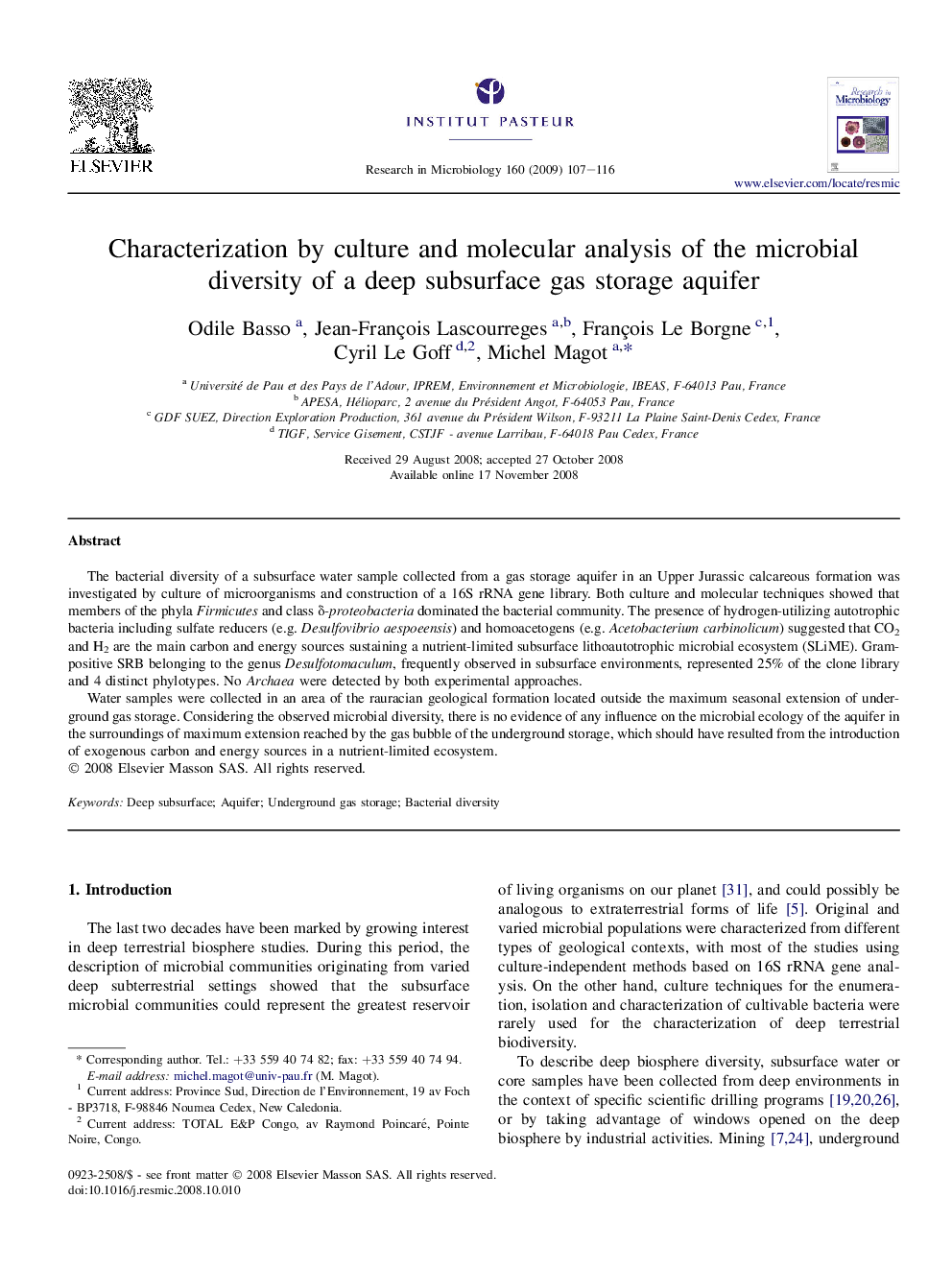| Article ID | Journal | Published Year | Pages | File Type |
|---|---|---|---|---|
| 4359261 | Research in Microbiology | 2009 | 10 Pages |
The bacterial diversity of a subsurface water sample collected from a gas storage aquifer in an Upper Jurassic calcareous formation was investigated by culture of microorganisms and construction of a 16S rRNA gene library. Both culture and molecular techniques showed that members of the phyla Firmicutes and class δ-proteobacteria dominated the bacterial community. The presence of hydrogen-utilizing autotrophic bacteria including sulfate reducers (e.g. Desulfovibrio aespoeensis) and homoacetogens (e.g. Acetobacterium carbinolicum) suggested that CO2 and H2 are the main carbon and energy sources sustaining a nutrient-limited subsurface lithoautotrophic microbial ecosystem (SLiME). Gram-positive SRB belonging to the genus Desulfotomaculum, frequently observed in subsurface environments, represented 25% of the clone library and 4 distinct phylotypes. No Archaea were detected by both experimental approaches.Water samples were collected in an area of the rauracian geological formation located outside the maximum seasonal extension of underground gas storage. Considering the observed microbial diversity, there is no evidence of any influence on the microbial ecology of the aquifer in the surroundings of maximum extension reached by the gas bubble of the underground storage, which should have resulted from the introduction of exogenous carbon and energy sources in a nutrient-limited ecosystem.
